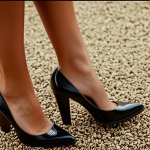Understanding Accessibility Standards
Navigating the complex world of accessibility guidelines is essential, especially within the realm of construction and design. The Americans with Disabilities Act (ADA) sets the benchmark for ADA compliance, ensuring all public spaces are accessible. These standards encompass features like wheelchair accessibility, requiring thoughtful design and planning.
In bathroom design, compliance is paramount. From the layout to fixtures, every aspect should cater to users with disabilities. Non-compliance can severely impact functionality, leading to inconvenient or unsafe environments. For instance, an improperly designed bathroom might block wheelchair movement or make it impossible for someone to reach essential facilities comfortably. The result could be not just inconvenience, but an increase in the risk of accidents.
Also to read : Transforming your home into a tropical paradise: expert tips for thriving indoor gardens in the uk’s cool climate
Wheelchair Accessibility implies more than just having a wide doorway. It involves adequate turning space, reachable fixtures, and clear paths. Adhering to accessibility guidelines helps avoid pitfalls and create a safer environment. Understanding these rules and the impact they have on ADA compliance ensures that spaces are not just legally compliant, but also practical and welcoming. Adopting these standards leads to inclusive designs, ensuring everyone can use facilities independently and securely.
Essential Design Elements for Wheelchair Functionality
Understanding the fundamentals of bathroom layout is crucial for ensuring wheelchair accessibility. Adequate space for maneuverability is key. This means ensuring that there is enough open space design for easy navigation. Bathrooms should allow for smooth movement, avoiding obstructions that might hinder accessibility.
In the same genre : Crafting a versatile home office in compact spaces: a comprehensive guide
When designing, consider the recommended dimensions for such spaces. For a wheelchair user, an optimal bathroom should feature a turning radius of at least 60 inches. This allows users to navigate and rotate effectively without difficulty. The layout should also factor in door widths of at least 32 inches, ensuring ease of entry and exit, which is pivotal for ADA compliance.
Incorporating these design elements enhances both the functionality and safety of the bathroom environment. Prioritizing them prevents bottlenecks and ensures that the individual has full access to every fixture. Thoughtful design doesn’t just meet regulations—it transforms the bathroom into a supportive space where everyone can perform daily routines with dignity and independence.
By centering the needs of wheelchair accessibility, designers foster environments that cater to all users. Creating open, barrier-free bathrooms is a testament to inclusive design thinking, benefiting communities and enriching lives.
Fixture Selection for Maximum Accessibility
Choosing the right fixtures is pivotal in creating an accessible bathroom for wheelchair users. Accessible fixtures should prioritize ease of use, ensuring that all users can navigate the space independently and safely. When selecting fixtures, three main criteria should be considered: height, reach, and usability.
Height plays a crucial role. Ensuring that the controls and handles on bathroom equipment are at a reachable height for seated users can significantly enhance user-friendliness and accessibility. For instance, an accessible toilet should have a comfortable seating height, ideally between 17 and 19 inches from the floor.
Reach is equally important. Fixtures such as sinks should be positioned to allow easy access without overwhelming physical effort. The flow of design should support smooth wheelchair movement while simultaneously keeping essential items within reach.
Incorporating grab bars can drastically improve bathroom safety, providing stability and aiding mobility. They should be strategically placed, especially near toilets and inside showers, facilitating secure lateral movements. By carefully considering these elements, designers can create a supportive and inclusive bathroom environment, promoting independence and confidence for all users.
Safety Features in Accessible Bathrooms
Ensuring personal security in accessible bathrooms is paramount. Essential safety features play a crucial role in preventing accidents. One vital component is the integration of non-slip surfaces. These surfaces help reduce the risk of slips and falls, making the bathroom environment safer for everyone.
Proper lighting is another key element that shouldn’t be overlooked. Adequate and well-positioned lighting ensures clear visibility, helping users navigate the space confidently. Installing dimmable lights can also help suit different needs and preferences.
Moreover, including emergency assistance features such as pull cords or emergency buttons provides added security. Positioned strategically, these can be easily reached in case of an incident, ensuring prompt help is just a call away.
To enhance bathroom safety, consider these important elements when designing. Not only do they promote a secure environment, but they also offer peace of mind to users. By thoughtfully incorporating these features, you can transform an ordinary bathroom into a space that prioritises safety, dignity, and independence.
Such safety measures contribute to a well-rounded accessible bathroom that caters to the diverse needs of all users, thus fostering personal security and confidence.
Real-life Examples of Accessible Bathroom Designs
Exploring successful accessible bathroom designs provides valuable insights into creating efficient and inclusive spaces. By analysing real-world projects, the principles behind effective bathroom layouts can be better understood.
Several case studies showcase how thoughtful planning and innovative design inspiration lead to highly functional spaces. For instance, incorporating a zero-threshold shower exemplifies a seamless transition that enhances both safety and aesthetics. This approach eliminates potential fall hazards and provides a model for creating an obstruction-free environment.
One inspiring example includes the use of wide, automated doors that cater to wheelchair users. These accessible bathroom designs leverage technology for ease of movement, allowing for unimpeded access. Similarly, adjustable sinks and counters demonstrate adaptability, catering to various height requirements and ensuring usability for all.
By examining the lessons learned from these projects, such as the strategic placement of grab bars and leveraging contrasting colours for enhanced visibility, designers can create environments that support independence. Using visual examples of effective layouts and fixtures simplifies the implementation process for others, reinforcing the significance of design inspiration. Through real-life applications, the impact of accessibility standards and thoughtful design becomes undeniable, fostering inclusivity in essential everyday spaces.
Product Recommendations for an Accessible Bathroom
Selecting accessibility products is crucial for enhancing an accessible bathroom’s functionality and comfort. When considering bathroom fixtures, selecting options that cater to various needs can make a significant difference. Adaptive products should prioritize ease of use and adaptability, ensuring they fit within the bathroom’s layout harmoniously.
For adaptive equipment, look for items that offer flexibility. Adjustable-height sinks and showerheads accommodate diverse user needs, allowing everyone to use them comfortably regardless of height or mobility limitations. Brands like Moen and Kohler offer extensive ranges of adjustable fixtures designed specifically for accessibility.
Consider integrating smart features in bathroom setups. Motion-sensor taps and voice-activated lighting are innovative solutions that enhance user experience by promoting independence for all users, including those with limited mobility.
When choosing products, consider durability and ease of maintenance. Non-slip flooring options from manufacturers like Tarkett offer robust solutions for preventing slips and falls, ensuring bathroom safety.
Reviewing a broad array of brands and products provides an informed perspective, helping select the best options tailored to specific accessibility needs. By integrating the right bathroom fixtures and adaptive equipment, users create a responsive and inclusive environment that meets modern accessibility standards.







